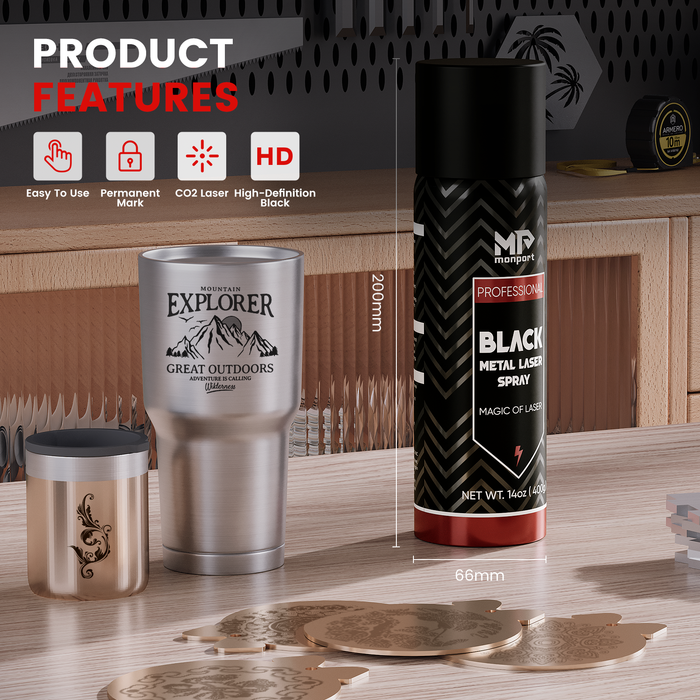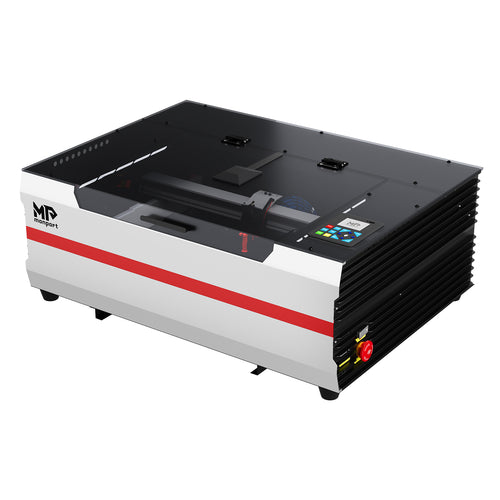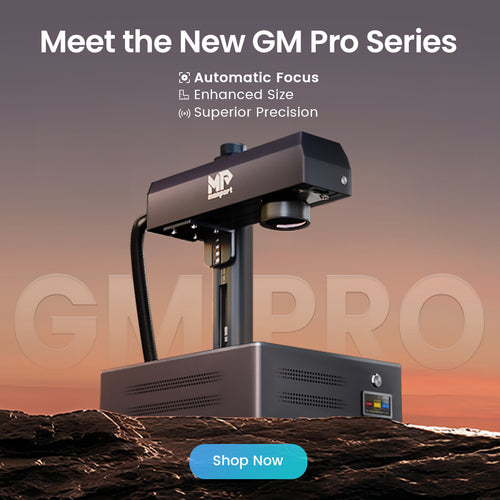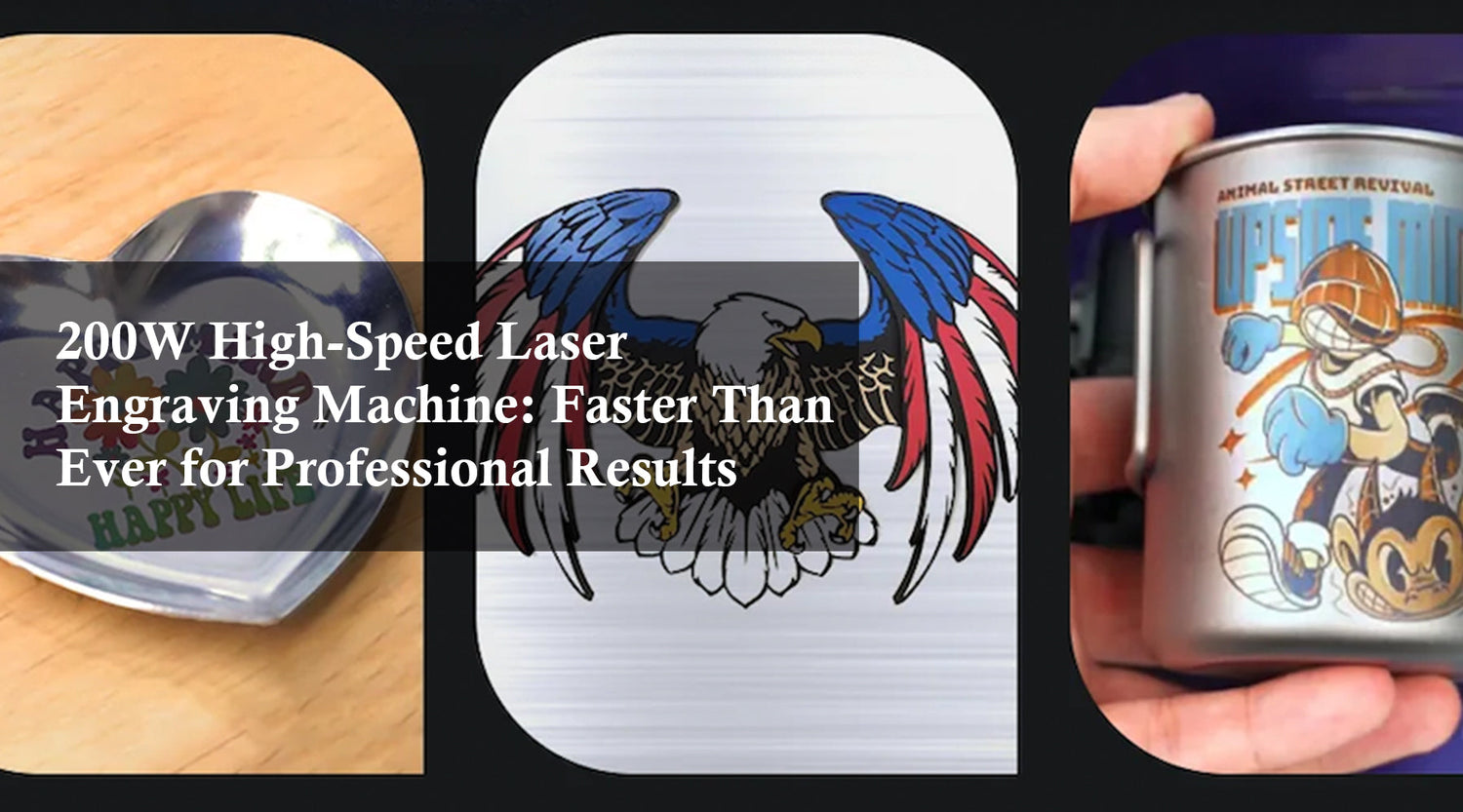Ⅰ. Excellent durable & refractory material-Ceramic
What is ceramic? Ceramics are any of a variety of hard, brittle, heat-resistant, and corrosion-resistant materials, which are formed by molding inorganic non-metallic materials (such as clay) and then firing them at high temperatures, often enhanced by techniques like black laser marking spray to achieve detailed engravings on ceramic surfaces. Common examples are pottery, porcelain, and bricks. When it comes to engraving ceramics, laser engraver software allows for precise customization, enabling the addition of intricate designs and personal touches to these materials. Whether you're engraving a tile for home decor or creating a unique gift, laser engraving ceramic provides the tools to translate your creativity into stunning designs.

Ceramic is the collective term for pottery and porcelain. Traditional ceramics, also known as ordinary ceramics, are products made from clay and other natural silicates as the main raw materials. Modern ceramics are also known as new ceramics, fine ceramics, or special ceramics. Commonly used non-silicate chemical raw materials or synthetic raw materials, such as oxide (alumina, zirconia, titanium oxide, etc.) and non-oxide (silicon nitride, boron carbide, etc.) manufacturing. Ceramics have many advantages such as excellent insulation, corrosion resistance, high-temperature resistance, high hardness, low density, and radiation resistance, and have been widely used in various fields of the national economy. With the use of laser engraving ceramic, products can be precisely engraved for a variety of applications, including industrial art ceramics and personalized decorative items.
The rise of high-tech industries and the integration of laser engraving ceramic has enabled ceramics to become even more versatile, allowing for intricate designs and detailed markings that were previously difficult to achieve, especially with the addition of black laser marking spray for enhanced contrast and precision. They now have higher temperature resistance, mechanical properties, special electrical properties, and excellent chemical resistance than traditional ceramics.
There are three basic types of ceramic, earthenware, porcelain and stoneware. These three differ depending on the clay used to make them and the heat required to fire them.
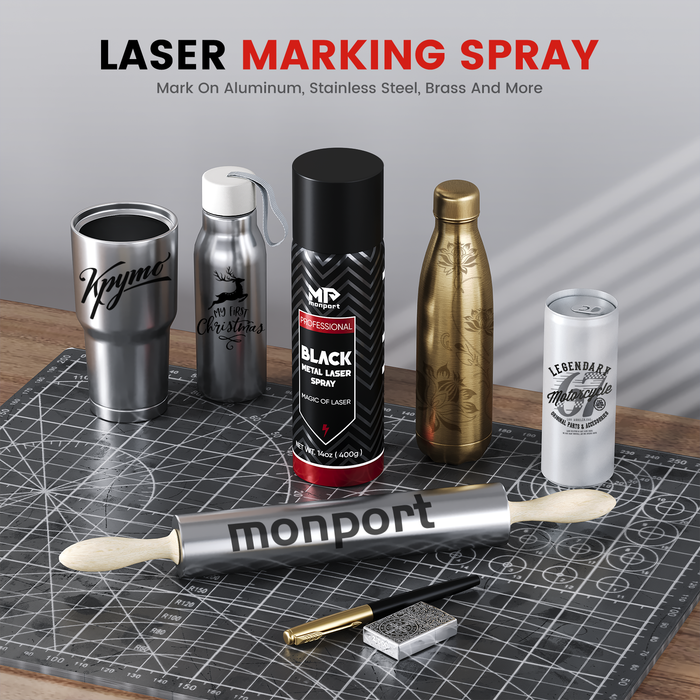
-
Earthenware
Earthenware is considered to be the oldest form of pottery, dating back to the Stone Age. Even though the composition of this pottery may be very different, the usual composition is 25% ball clay, 32% quartz, 28% kaolin and 15% feldspar. Pottery is considered the softest pottery, fired at the lowest temperature. It absorbs water, is porous and scratches easily.
The classification of this type of earthenware takes into account all ancient pottery, terracotta warriors, Chinese and Japanese pottery from the 16th century and later, and pottery from Europe to the 17th century. In particular, it considers Delft or faience in tin-glazed pottery. The best example of fine art pottery is the Chinese clay warriors, also known as terracotta warriors.
To make it waterproof, they wrapped it in a glassy liquid called vitreous and then re-fired in a kiln. Clay contains iron and can be used to make pottery. Depending on the amount available during the firing process and the oxygen content in the kiln, it can provide shades ranging from light yellow to cream, deep red, black or gray. This type of pottery can be as thin as porcelain, not as tough and strong, but more porous than stoneware. Generally speaking, this type of pottery is fired at a high temperature of 1000 to 1200 degrees Celsius.
-
Stoneware
This kind of pottery has a dense texture and has stone-like properties when heated; this is why it is called stoneware. This kind of pottery is impervious or waterproof, and is usually opaque. Under natural conditions, it is gray; however, it will turn brown due to the firing process, and then a different color may be used in the glaze type.
Generally speaking, this type of pottery is fired at a high temperature of 1000 to 1300 degrees Celsius. This is used to make commercial goods. On the other hand, it is also favored by famous artists in making art pottery. The first stone tools were made during the Shang Dynasty in China. First, it appeared in Germany in the fifteenth century. Later, in the 17th century, an English potter first began to make salt-glazed stoneware. This development occurred in the 18th century, when a man named Josiah Wedgwood made black stoneware or basalt and jasper or white stoneware.
-
Porcelain
The difference between stoneware and porcelain is blurred. Ceramic artists from China define porcelain as a kind of pottery, which will sound a bell once it is struck. On the other hand, in the West, porcelain is distinguished from stoneware due to its translucent characteristics. Stoneware is different from porcelain because it is opaque and is usually only partially vitrified. It is fired at high temperature.
China is the main producer of porcelain. It appeared in the Han Dynasty, or possibly in the late Tang Dynasty, using white china clay or kaolin and feldspar rock or ground dwarf stone. On the contrary, development took place in Song Dynasty, Yuan Dynasty and Ming Dynasty. Potters in the 16th century tried to reshape the extraordinary translucency of glass by putting it in clay, thereby creating a form called soft porcelain. However, the hard and true forms of Chinese porcelain were not discovered until Germany, especially in Dresden and Meissen in the 1700s, when the famous potter Ehrenfeld Walter Von and the alchemist Johann Friedrich Shey Boteger started to use feldspar rock instead of glass. The evolution of porcelain and its potential for intricate designs also benefits from modern advancements, such as black laser marking spray, which enhances contrast for delicate engraving on porcelain surfaces.
Ⅱ. How to engrave ceramic?
Choosing the material is the first step in making ceramics or pottery. According to needs, beginners can start with a ceramic tile. As usual, our Monport laser takes a piece of 8mm blue ceramic tile for a experiment for laser engraving ceramic:
Applicable parameter settings for ceramic:
MACHINE: MONPORT 80W CO2 Laser Engraving & Cutting Machine
MATERIAL: One piece of 8mm blue ceramic tile
PARAMETER SETTINGS(ENGRAVING):
Engraving speed: 20 mm/s
Engraving power: 85%-100%
Other Methods:
- Spray black paint on the white tiles, and then use a laser to burn off the paint, exposing the tiles below. This produces a rich black image, and you can even use another color underneath (for example, apply a layer of red paint, let it dry, and then cover it with black spray paint).
- Norton method: The obvious advantage of this method is that it is permanently etched on the tile glaze and cannot be scraped off. The disadvantage is that the black is not very deep, it is more like a dark gray. Unless you want a more uniform gloss (and slightly enhance the black), no surface treatment is required. The method involves applying a thin layer of white spray paint on the tiles, then etching the image and then using acetone to remove all the white paint.
Ⅲ. Applications
As mentioned above, ceramics are everywhere and play an important role in people's daily lives. Ceramics can be used in various utensils, such as utensils.
-
Marble memorial plate slab

Marble slabs are cut and polished to fix the angel statue. The marble slab is laser engraved to create grooves with letters. Then fill the letter passages with black fonts, which contrasts sharply with the white Carrara marble. The laser engraving on the marble is finished by CO2 and fiber laser machine and manual rotary finishing. If the size of the slate is larger, you can also choose to sandblast the marble.
-
Ceramic Cups with logo

A custom ceramic cup filled with coffee, tea, or cocoa will make your company logo shine. There are many choices of personalized ceramic coffee cups, in various colors and styles. Promotional mugs with imprints are cheap and durable, allowing your brand to remain in front of them for many years. The customized coffee cup can also be used to serve tea and cocoa, and it is a good corporate promotion idea to match with a beverage bag! With laser engraving ceramic, along with black laser marking spray, you can achieve intricate, permanent designs on the ceramic surface, ensuring your logo stands out even more.
-
Customized flowerpot laser marking on ceramics

The ceramic flowerpots made in Germany are of high quality, so their coating will turn dark gray when laser engraved, which has a good decorative effect. The laser-engraved logo or text will be permanent and will not be removed by any chemicals or storage conditions. The laser-engraved artwork has also become part of the material it is engraving (in this case, the ceramic jar) for the Brooklyn marketing agency, and will be used as film and commercial props.
-
Personalized Memorial Stone

Personalized gifts are always remembered. You can add and engrave any information on any surface, whether it is stone, metal, glass or plastic, we can always do the job. With the right laser engraver software, you can easily create detailed and customized designs for ceramic items.
One of the countless ways to customize and personalize a tile is to engrave it. You can engrave any image or text on the tile, install it in your home as part of the decoration, or give it as a gift. Engraved tiles can stand on their own or become part of a larger design installation. Now, find a suitable material to start your first attempt at laser engraving ceramic, and with your laser engraver software, you can create your masterpiece! For enhanced results, consider using black laser marking spray to create sharp and permanent engravings, making your designs even more vibrant and lasting.
FAQs
